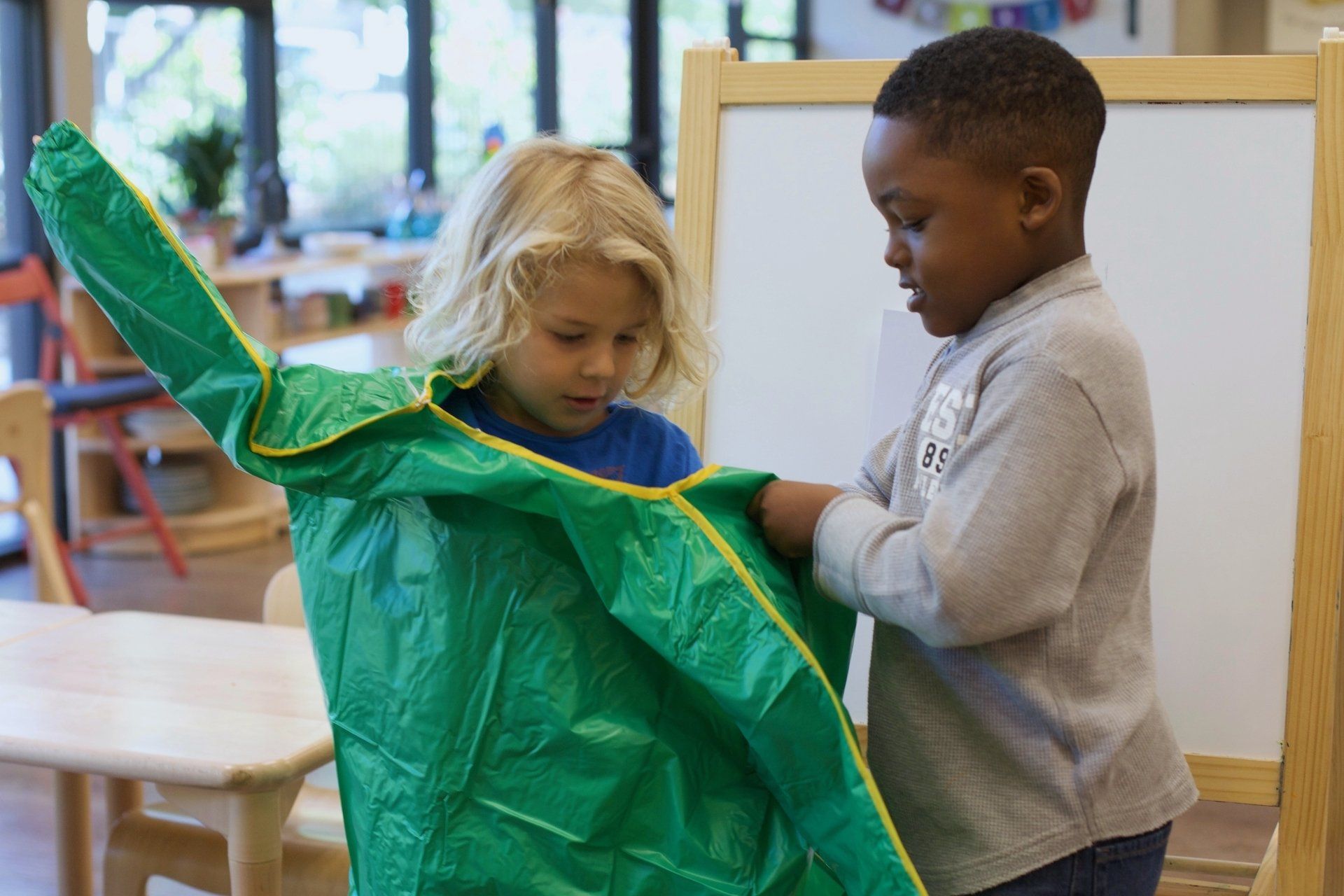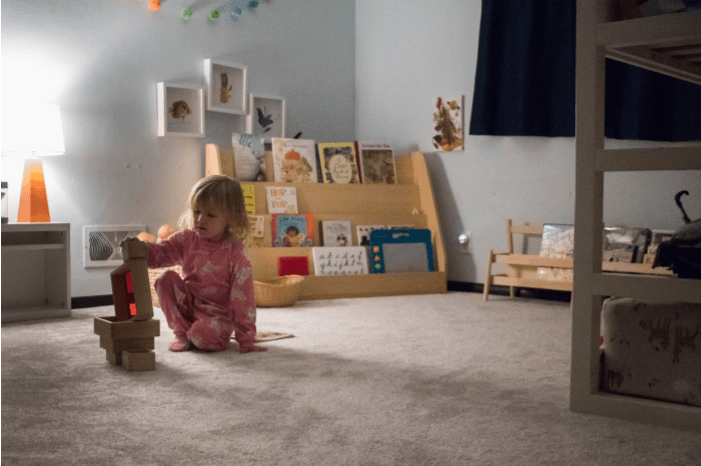Babies, Toddlers, and Bedtimes
At some point or another, we all struggle with some element of our children’s bedtimes. We know they need a good amount of quality sleep but making that happen is no small task. Figuring out what works for your child is best done early on in their life, so today we are sharing some ideas to implement a successful bedtime structure for your baby or toddler.
A few points to remember: all children are different, each child’s needs change over time, and you will have to reestablish your routine after things like vacations, illness, or growth spurts.
Try a Floor Bed
While this won’t work for every family, using a floor bed is one way to consider Montessori principles. There is no need to purchase anything fancy; simply placing a mattress you already own on the floor will do. The idea is that doing so respects a child’s autonomy of movement and allows them more independence than if they are contained within a crib. It’s easier and safer for a young child to get in and out of a floor bed than attempting to scale their way out of a crib. Many children who use one are able to entertain themselves upon waking because they have the freedom to do so. Of course, parents will need to consider reasonable safety precautions, such as what to do about stairs if the bedroom is not on the first floor.
Consider the Bedroom Environment
Montessori is all about preparing the environment to meet the needs of the child and to nurture independence and growth. Our bedrooms should be a place for relaxation, so take that into consideration as well. Soft, muted or neutral colors are preferable to bright, bold ones. Make sure there is a soft lighting option as well; this gives children a sense of security and calm.
Beyond the bed itself, what else might you include? Most families have an area for changing diapers easily, and there will need to be some sort of storage for clothing. Beyond that, think about relaxing entertainment options. Some ideas:
- Books.
- A limited number of toys that are high-interest and developmentally appropriate.
- Low shelves or baskets to display books and toys. These should be arranged so that a child who is mobile can easily access them.
Develop a Routine
We all thrive on routine, but children especially so. Find what works for your family and stick to it. It helps to begin your routine about an hour before your child’s actual bedtime, so that no one feels rushed and it’s a pleasant experience for all. Every family has its own needs and preferences, but here is one general routine you could use as a starting-off point:
6:30 – take a bath
6:50 – put on pajamas and brush teeth
7:00 – read stories
7:15 – lights out, cuddle, and chat
7:30 – goodnight!
Consider Yourself a Guide
Since we are responsible for the well-being of our children, it’s easy to fall into the mindset that we must ensure everything goes according to the plan we have mentally prepared. As we all know, that’s not how life works. Your child is a person independent of you, and even if they are generally well-behaved, they won’t always want to go along with what you ask of them.
It can be freeing to occasionally remind ourselves: We cannot actually make our children sleep. Only they have the power to do that. All we can do is our best to guide them in the direction we hope they will take. This mentality applies to so many elements of the parent/child relationship, so recalling its importance when establishing early sleep patterns is great practice! This is not to say you should let your child do whatever they like, but like any Montessori environment, it’s all about freedom within limits. We must give our children as much freedom and choice as we can, relative to their developmental and individual needs.
Decide where your boundaries are, make them known, and give choice within those limits. This is how we set our children up for success and help them develop the independence they need as they mature.
Lastly, frame bedtime as a positive experience. Think about the language you use and the tone of your voice when announcing it’s bedtime. This is easier said than done when we are exhausted ourselves, but it can make a world of difference!
Be Flexible
Remember that bit we said about the importance of routines? While that is critically important, we must also remember with empathy and compassion that nobody sticks to rigid routines 100% of the time. We all have off days, whether it be because we are not feeling well, are in a period of transition, or are experiencing strong emotions. Try to put yourself in your child’s shoes and allow for wiggle room when it’s really needed.
Sometimes we all need a little extra cuddle time. This doesn’t mean your child is trying to stay up later (although that may absolutely be the case!). They may genuinely need a little extra reassurance or closeness.
We hope this post has been helpful. Let us know if you try any of these suggestions! Is there anything else you would add to the list that might be helpful to other families?
You might also like








